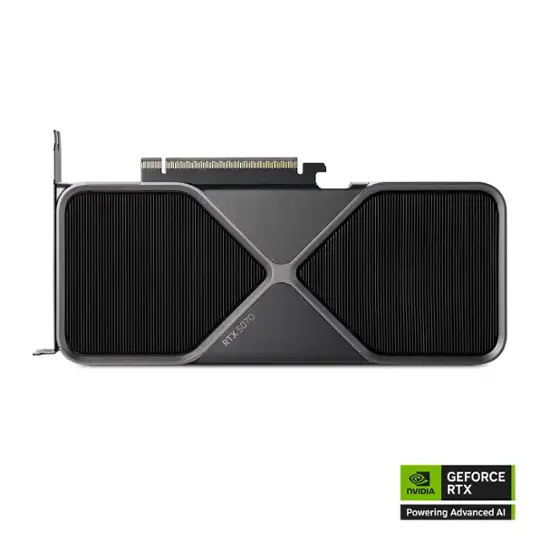NVIDIA appears to be pivoting its manufacturing strategy as it prepares for the next wave of AI dominance. According to multiple industry sources, the company is rumored to be cutting back production of its upcoming GeForce RTX 50 series graphics cards by as much as 20–30%—especially in the Chinese market—in favor of accelerating production of its highly anticipated GB300 AI GPUs, part of the Blackwell Ultra family.
This potential shift underscores a broader transformation within NVIDIA. Once primarily known for dominating the gaming GPU landscape, NVIDIA is now doubling down on artificial intelligence, data centers, and cloud computing—sectors that are delivering record-breaking revenues for the company.

Why the GB300 Matters
The GB300 is part of NVIDIA’s new Blackwell architecture, unveiled as the next leap in high-performance AI computing. These chips are engineered to deliver unprecedented efficiency and processing power for tasks like LLM (large language model) training, AI inferencing, autonomous systems, and hyperscale data centers. Compared to the current H100 and even the Blackwell-based B100, the GB300 and its dual-chip configuration promise significantly higher throughput while maintaining tighter energy consumption metrics—a critical consideration in global AI expansion.

Mass production of the GB300 is expected to begin in late 2025, with NVIDIA already investing in advanced packaging and TSMC capacity to ensure these chips meet rising global demand. Major tech firms like Microsoft, Amazon, Meta, and Google are reportedly lining up orders, making it clear that AI hardware is now NVIDIA’s top priority.
What It Means for Gamers and PC Builders
This strategic shift could have ripple effects for consumers. If production of the RTX 50 series is indeed being throttled, that could translate to constrained supply and higher retail prices—especially during the critical holiday 2025 window when NVIDIA was expected to launch new GPUs like the RTX 5080 and RTX 5090.
For budget-conscious gamers and PC enthusiasts, this move could be frustrating. The RTX 40 series already faced criticism for high prices and availability issues at launch. A repeat of those problems, paired with limited stock of the RTX 50 series, could stall PC upgrades for another year or push consumers toward AMD alternatives.

The Bigger Picture: NVIDIA’s AI Gold Rush
NVIDIA’s focus on AI is not just about chips—it’s about ecosystem control. The company has increasingly positioned itself as a full-stack provider, offering everything from hardware (GPUs, networking) to software (CUDA, TensorRT) and services (NVIDIA DGX Cloud). This vertical integration allows NVIDIA to corner a market that’s becoming more lucrative than gaming: enterprise AI.
CEO Jensen Huang has repeatedly emphasized that we’re entering a new computing era driven by AI, and the market has responded. NVIDIA briefly hit a $3 trillion market cap in May 2025, overtaking Apple and becoming the second most valuable company globally. Investors are betting on AI—not gaming—as NVIDIA’s future.
Conclusion
While still unconfirmed by NVIDIA, reports of production cuts to the RTX 50 series in favor of the GB300 AI chip reveal a tectonic shift in priorities. The gaming community may face limited GPU options in the near term, but NVIDIA’s ambitions in AI infrastructure could reshape the tech industry for years to come. Whether you’re a gamer or an enterprise buyer, this is a story worth watching closely.
RTX 5090 Restocks Expected To Be Delayed For Months
If you’ve been waiting to get your hands on the latest NVIDIA RTX 5090 graphics card, you might need to wait a bit longer. Since the official launch on January 30, 2025, these high-end GPUs have been extremely hard to find due to overwhelming demand and supply issues.
Retailers are now suggesting that RTX 5090 restocks could take anywhere from three to sixteen weeks, with some estimates putting full availability as far out as July 2025. The situation isn’t much better for the RTX 5080, which might see restocks in two to six weeks. These delays come amid reports of performance debugging issues with the RTX 5070 and 5060 models, which could be adding to the production bottlenecks.
NVIDIA had warned about potential shortages before launch, but few expected the situation to be this severe. With such limited availability, many PC builders and gaming enthusiasts are left wondering whether to wait for the new cards or look for alternatives. The extreme shortage has also led to scalping, with some cards appearing on secondary markets at heavily inflated prices.
Key Takeaways
- RTX 5090 graphics cards may not be fully restocked for up to four months due to high demand and supply chain issues.
- Performance debugging problems with other RTX 50 series cards are contributing to production delays across the entire lineup.
- Retailers expect staggered restocks starting in late March through July 2025, with the RTX 5080 likely to become available sooner than the flagship 5090.
Impact of RTX 5090 Restock Delays on Market and Consumers
The ongoing RTX 5090 shortage is creating ripple effects throughout the tech market, affecting everything from pricing to consumer purchasing decisions. Stock deficits may continue for up to four months, straining retailers and frustrating eager buyers.
Analyzing the Supply Chain Disruptions
Supply chain issues continue to plague Nvidia’s flagship RTX 5090 graphics cards. Multiple retailers report receiving only limited shipments, with many pre-orders still unfulfilled. These shortages stem from manufacturing bottlenecks and high demand for the new technology.
Some stores have implemented waiting lists, while others use lottery systems to distribute the limited stock. This has created an unpredictable buying experience for consumers.
Retailers like Overclockers estimate restocking timeframes between three to sixteen weeks. These extended delays suggest deeper production problems beyond simple demand issues.
The shortage affects not just gamers but also professional users who rely on high-performance GPUs for work. Content creators, AI researchers, and data scientists face project delays without access to this hardware.
Consumer Sentiment and Demand Fluctuations
Frustrated buyers report spending hours refreshing store pages during announced restocks only to find the RTX 5090 sold out within minutes. This has led to declining consumer confidence in Nvidia’s ability to meet demand.
The shortage has created a secondary market where scalpers resell the cards at 40-60% markups above MSRP. Many consumers refuse to pay these inflated prices, choosing instead to:
- Wait for official restocks
- Purchase alternative GPUs
- Keep using their current hardware longer
- Consider AMD alternatives
Demand remains high despite the challenges. When retailers announce restocks, their websites often crash from traffic surges, showing persistent interest despite availability issues.
Comparative Situations with RTX 5080 and Other Models
The RTX 5080 faces similar but less severe shortages, with expected restocking times of two to six weeks. This creates a tiered availability situation:
| GPU Model | Estimated Restock Time | Relative Availability |
|---|---|---|
| RTX 5090 | 3-16 weeks | Very Low |
| RTX 5080 | 2-6 weeks | Low |
| RTX 5070 | 1-4 weeks | Moderate |
Lower-tier models see faster restocking cycles. This pushes some consumers toward these alternatives rather than waiting for the flagship 5090.
Companies dependent on high-end GPUs face tough choices between waiting for the 5090 or settling for the more available 5080. The performance gap makes this a significant compromise for certain applications.
Previous generation RTX 4000 series cards have seen renewed interest and price stabilization as buyers seek alternatives to the hard-to-find 5090.
Potential Responses and Strategies
As the RTX 5090 shortage continues, various stakeholders are developing approaches to address supply issues and manage customer expectations during this challenging period.
Manufacturer Updates From Nvidia and Partners
Nvidia recently acknowledged production difficulties with the RTX 5090 series. The company pointed to semiconductor supply constraints and manufacturing halts as primary factors. According to internal sources, Nvidia is exploring alternative manufacturing partners to boost production capacity.
MSI and ASUS have adjusted their production timelines, with both companies pushing expected delivery dates to Q3 2025. Zotac, meanwhile, has prioritized production of lower-tier cards to maintain some market presence.
Nvidia CEO Jensen Huang addressed investors on March 5, 2025:
“We understand consumer frustration and are implementing a three-phase approach to resolve supply issues:
- Expanding current manufacturing partnerships
- Optimizing component sourcing
- Increasing shipment frequencies to retailers”
These measures aim to gradually improve availability starting in May 2025.
Retailer Insights: Overclockers UK, Newegg, and Ebay
Major retailers have implemented different strategies to manage limited stock. Overclockers UK has shifted to a queue-based reservation system, allowing customers to secure a place in line with a 10% deposit. Their latest update indicates fulfillment times of 10-14 weeks for new orders.
Newegg has introduced a lottery system for RTX 5090 cards. Customers can enter drawings held twice weekly with winners given a 24-hour purchase window. Their representative stated: “This approach ensures fairer distribution and reduces website traffic spikes.”
eBay listings reveal concerning trends:
| Retailer | MSRP | Current Average Price | Price Premium |
|---|---|---|---|
| Official | $1,999 | N/A (out of stock) | N/A |
| eBay | $1,999 | $3,450 | 73% |
Several retailers now limit purchases to one card per household address and require account history or phone verification.
Dealing with Scalpers and Ensuring Fair Distribution
Scalpers continue to exploit the RTX 5090 shortage, using bots to purchase limited stock and resell at inflated prices. Some retailers have implemented technical countermeasures, including:
- CAPTCHA verification
- Queue systems with randomized entry times
- Address and payment method verification
- Limiting sales to customers with purchase history
Nvidia has partnered with major retailers to prioritize sales to verified gamers through their GeForce Experience program. Users with logged gameplay hours receive priority access during restocks.
Consumer advocacy groups recommend patience rather than paying inflated prices. They suggest considering alternative GPUs like the RTX 4090, which offers 85% of the performance at 60% of the current market price of the 5090.
Some community-driven Discord servers now track inventory and alert members to legitimate retail opportunities, helping buyers avoid scalpers altogether.
Frequently Asked Questions
The RTX 5090 restock situation continues to evolve with varying timelines reported by retailers and manufacturers. Supply chain disruptions and production challenges remain significant hurdles.
What factors are contributing to the extended delay in RTX 5090 inventory replenishment?
Several key factors are causing the RTX 5090 restock delays. Chinese New Year celebrations have temporarily shut down factories, pushing back production schedules by 2-3 weeks.
Supply chain disruptions continue to affect component availability. Manufacturing capacity limitations also play a role, as production facilities struggle to meet the high demand for these premium graphics cards.
Shipping and logistics issues have further complicated the situation, creating bottlenecks in the distribution network.
When can consumers expect the RTX 5090 to become readily available for purchase again?
Based on retailer information, RTX 5090 restocks could take anywhere from 3 to 16 weeks. Some retailers like Overclockers have provided more specific estimates of 2-14 weeks for new inventory.
This wide range reflects uncertainty in the supply chain. Customers should prepare for limited availability until summer 2025, with gradual improvements expected starting in late May or early June.
Regional differences may affect availability, with some markets receiving stock earlier than others.
How will the reported delays in RTX 5090 restocking impact the overall graphics card market?
The extended RTX 5090 shortage will likely push prices higher for available units. Scalpers may capitalize on the scarcity, creating an inflated secondary market.
Demand may shift to alternative high-end cards. The RTX 5080, which reportedly faces shorter restock times of 1-3 weeks, could see increased interest from consumers unwilling to wait for the 5090.
The overall PC hardware market might experience ripple effects as system builders delay projects or choose alternative configurations.
What are the alternative options for consumers facing RTX 5090 stock shortages?
The RTX 5080 presents the most logical alternative, offering strong performance with potentially better availability. According to retailer estimates, it may restock within 1-3 weeks.
Previous generation RTX 4090 cards remain viable options for users who need immediate high-performance solutions. These older models still deliver excellent performance for most applications.
AMD’s competing high-end graphics cards could also attract customers unwilling to wait for NVIDIA’s flagship product.
What is the predicted timeline for resolving supply chain issues affecting RTX 5090 availability?
Industry analysts expect gradual improvement in supply chain conditions starting in late spring 2025. Most retailers anticipate more consistent stock levels by summer.
The 3-16 week timeframe mentioned in reports suggests full resolution could extend into July 2025. Early indications point to incremental improvements rather than a sudden flood of inventory.
Manufacturing capacity is expected to normalize after the post-Chinese New Year restart period.
Have manufacturers provided any official statements regarding the prolonged RTX 5090 restock delays?
NVIDIA has not issued comprehensive public statements addressing the specific timeline for RTX 5090 restocks. Their communication has been limited to acknowledging high demand.
Retail partners have been more forthcoming with estimates. Major retailers like Overclockers have published expected restock timelines ranging from 2-14 weeks for the RTX 5090.
Board partners that manufacture custom RTX 5090 models have generally remained quiet about specific production timelines, creating additional uncertainty for consumers.







